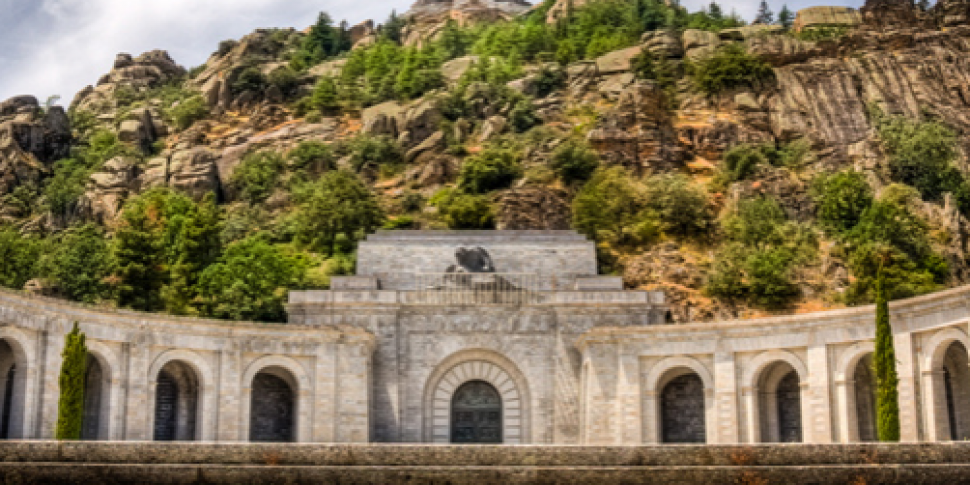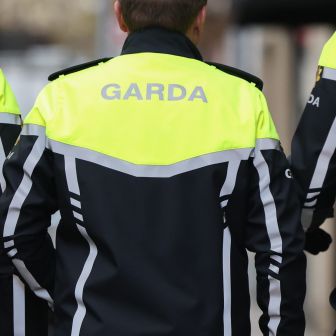The Spanish parliament is split over a sensitive debate regarding the remains of former dictator Francisco Franco, with plans to exhume the fascist leader from the giant mausoleum he ordered built after the Spanish Civil War.
After a heated debate in the Congreso de los Diputados, MPs are expected to approve a bill that would see the government convert the controversial memorial from a tribute to the fascist dictator to a place of reflection and reconciliation.
Franco's plans for a memorial
Located on a hillside outside Madrid, the Valley of the Fallen is a giant basilica etched into the rock of a hill, with a 150m granite cross towering above. Set in 13.6 square kilometres of parkland, the giant complex features grand walkways leading to columned shelters that guide visitors to the entrance of the basilica.

General Francisco Franco poses with a pair of binoculars on the front lines of the Spanish Civil War in 1936 [PA/PA Archive/PA Images]
Those wishing to pay homage to the victims of the 32-month Spanish Civil War must first pass through security clearance checks at the gates, making their way into the grand domed hall that is lined with tapestries. Pilgrims must walk past statues of helmeted soldiers and sword-carrying angels that stand at the entrances to the side chapels dedicated to members of the armed forces.
An estimated 50,000 victims of the Spanish Civil War are buried in the complex, many of whom were exhumed from their graves and used to fill the giant crypt. Included among them at the centre of the basilica is the tomb of General Franco, where freshly cut flowers are continuously laid in tribute to him.
The fascist dictator first announced his grand plans for the mausoleum in 1940, declaring that the Valle de los Caídos would be a “place of rest and meditation to perpetuate the memory of those who fell in our glorious crusade.”

Protesters shout slogans and hold a banner with pictures of missing people during the Spanish dictatorship of Francisco Franco at a rally in Madrid on May 4th, 2017 [Jorge Sanz/Zuma Press/PA Images]
Political prisoners were forced to dig into the hillside to create the space for the complex, living in work camps on the site. The death toll of those conscripted for its construction ranges from 15 (according to official documents) to more than 27,000.
Spain's process of historical reconciliation
In 2011, after passing the Historical Memory Law four years earlier, José Luis Rodriguez Zapatero’s government called for the site to be converted into a politically-neutral memorial of all the victims of Franco’s regime. That law had already been used to change street names and remove statues of Franco from public spaces, but the grand memorial remained as it has been since his burial there in 1975.
Since his death, the Francisco Franco Foundation has commemorated his passing every November with a mass held in the Valley of the Fallen. The complex has also become a destination for supporters of his regime and neo-fascist groups, though such rallies are now officially outlawed by the Historical Memory Law.

A workman starts the process of removing a vandalised bust of Franco in a Spanish village as part of the move to remove references to his regime in public spaces [Twitter]
After Zapatero’s Socialist government lost out in Spain’s 2011 elections, conservative Prime Minister Mariano Rajoy abandoned plans to redesign the crypt. Rajoy’s Popular Party has reiterated its stance several times since, but is the only major political party in the country opposing the change.
With the Popular Party ruling as a minority party, however, it is expected that the vote will pass easily when the 350 deputies in the Spanish congress vote on Thursday. But as a non-binding, non-legislative measure, Rajoy’s cabinet could ignore the vote, having included no mention of a redesign in its budget plans for 2017.









